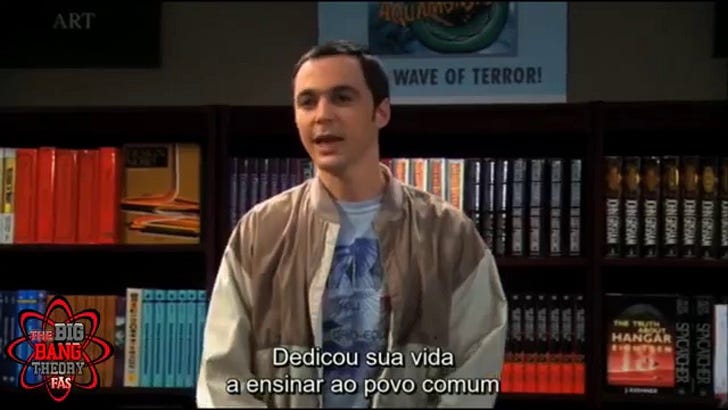The Truth is Out There
Aliens, Biases, and the Perils of Misinformation
SCIENCE AND SOCIETY:
Should we watch out for alien life at our doorstep? Maybe not yet…
In today’s episode of “The Big Bang Theory”, we're transported to a fascinating lecture at the Planetarium, where Raj Koothrapali, our charming astrophysicist, reflects on the possibility of alien life existing in the universe. His speculative thoughts meant to intrigue and educate, took an unexpected turn when a journalist in the audience decided to spin his words into a sensational story. This episode serves as the perfect excuse to discuss the serious issue of misinformation in media, so sit back, relax, and watch the video 😉.
Look at poor Raj, standing under the dome of stars, speaking about the mysteries of the cosmos. His aim? To spark curiosity and wonder about what lies beyond our planet. However, the journalist’s article twisted his reflections into a claim that Raj was confirming the existence of aliens. Suddenly, a scientific discussion meant to engage and educate turned into headline meat that misleads more than it informs.
This relates to a previous article I wrote if you want to read more about the topic:
This isn't just a made-up problem for sitcom humor. In the real world, the consequences of such misreporting can be serious, especially when it comes to complex issues. Beyond using statements out of context, science communication is subject to other major challenges, such as the concept of “Balance as Bias”.
The paper by Boykoff, M.T. and Boykoff, J.M. (2004) highlights a critical flaw in media coverage of global warming by prestigious U.S. newspapers. By striving for "balanced reporting," journalists often create false equivalences, giving equal weight to the minority of dissenting voices as to the overwhelming consensus of scientific experts. This practice can lead to public confusion and a divergence from scientific truth.
Let’s jump into this.
Here is an oldie but goldie, so you can have a laugh while you try to understand the concept better:
It gets me every time 😂.
Just as Raj's innocent discussion of aliens gets blown out of proportion, the essential debates about climate change are skewed in public forums. Scientists aiming to communicate their findings face the challenge of not only making complex information accessible but also competing with sensationalist media narratives that prioritize controversy over clarity.
But what about freedom of speech you might be wondering?
Here is why you should not worry:
Focus: Balance as Bias critiques how media portrays information, particularly scientific topics. It argues that striving for "equal sides" can distort the truth when there's a strong scientific consensus on one side.
Freedom of Speech: This principle protects the right to express oneself without government censorship. Media outlets can still publish whatever they choose, but the theory critiques the impact of unbalanced reporting.
Accuracy vs. Censorship: Balance as Bias advocates for accurate representation, not censorship. It highlights the importance of reflecting the weight of evidence in scientific issues.
However, the theory does touch on a complex area which is Misinformation vs. Free Speech. While free speech protects expression, spreading harmful misinformation can have negative consequences. So, the line between free speech and harmful content can indeed be blurry, but that’s a topic for another time.
What can be done?
For starters, media outlets should prioritize accuracy and context over the allure of balance when balance distorts the truth. Journalists should focus on reflecting the consensus in the scientific community rather than giving undue attention to fringe opinions just to appear neutral.
For us, as consumers of media, the lesson is to remain skeptical and question what we read and hear. Always look for sources that base their reporting on solid evidence rather than sensationalism.
In essence, Raj’s episode in the Planetarium it's a mirror reflecting a broader issue in media. Whether it's the possibility of extraterrestrial neighbors or the realities of climate change, the way information is presented matters. It's up to both media professionals and the public to seek and spread knowledge responsibly, ensuring that the thrill of discovery and the weight of facts find the balance they deserve in our collective discourse.
Now, if you'll excuse me, I have a sudden urge to check my backyard for little green men... just in case.
REFERENCES
Boykoff, M.T. and Boykoff, J.M. (2004) Balance as Bias: Global Warming and the US Prestige Press. Global Environmental Change, 14, 125-136.
And thanks to Sara Moraca for sharing with me, and other lucky fellow sci-comm students, her knowledge and passion about this topic.



